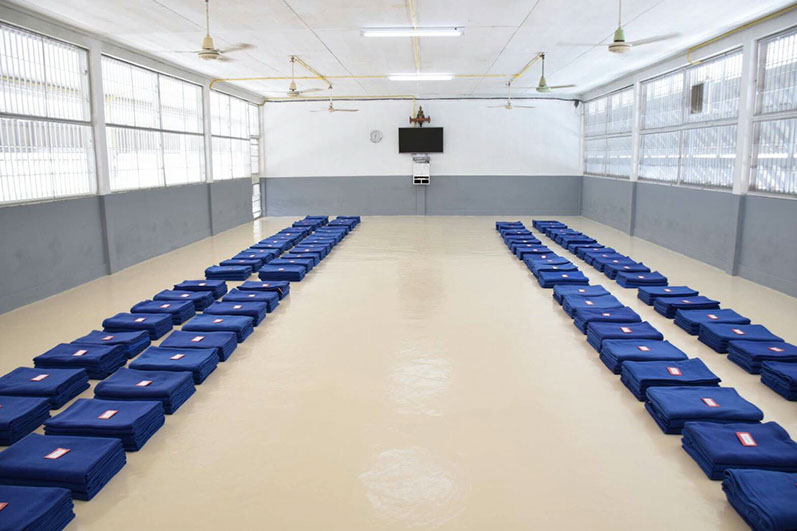COVID - 19 in Thai Prisons
COVID – 19 in Thai Prisons
Nathee Chitsawang, Ph.D.
As the coronavirus disease or COVID – 19 infections are spreading all around the world, the situation in Thailand as far as April 1st, 2020 shows that there are about 1,700 infected cases despite a continued rise. As a result, Thai prison system has implemented strong measures for preventing such virus from spreading into correctional facilities. This attempt is extremely crucial because if COVID – 19 outbreak occurs behind bars, it will lead to a dreadful disaster for general population at large. At present, the total prison population is nearly 380,000 incarcerated in 143 overcrowded prisons while their maximum capacity is actually for housing only 200,000 prisoners. Nonetheless, as of April 1st, 2020 it is reported that 2 prisoner has already tested positive for COVID – 19 and now transferred to receive proper treatment and care.
The challenging question is what measures Thai prisons have been introduced for controlling the spread of COVID-19 effectively in spite of the fact that many provinces in the country are under the outbreak. Of course, it is not the ‘social distancing, as such principle cannot be practically applied to all severely overcrowded prisons where too many people have to sleep in close proximity to other prisoners in the dormitory. In fact, the first answer to above-mentioned question is the screening process for a group of newly admitted prisoners as well as those going out from prisons during the daytime each day, i.e. going to the courts, and going to the hospitals. Besides, several zones inside the prison walls must be efficiently designated for specific purposes as follows:

1. Zone 1 is an isolation area where prisoners are isolated in 14 rooms for 14 days. After completing isolation period in Zone 1, the prisoners shall go through Zone 2.
2. Zone 2 is a reception area for monitoring and observing symptoms. If the convicted prisoners or those transferred from Zone 1 show good health conditions, they shall enter to Zone 3.
3. Zone 3 is a general area divided into different units and rooms where prisoners’ movements are seriously restricted.
Apart from carefully screening for newly admitted prisoners, there must be not only a strict control but also a limitation of sending prisoners outside the gates. The prison authority should cancel any work schemes or activities outside the prison walls unless it is absolutely necessary for them to go, such as receiving medical treatment at the hospital and attending the court hearings. In the latter case, the Court of Justice has offered valuable assistance with suspended prosecution in some cases and application of E-court to reduce the number of prisoners sentenced to prisons and those going outside for the court hearings.
In addition, the family visits have been temporarily suspended, but the tele-visit system is still available, such as LINE Application or E-visiting program. In case of the outsiders who want to conduct prison research, make a formal study visit or participate in any activities with prisoners, their requests are also turned down. If it is really mandatory, they will be carefully screened. Most importantly, the prison officers and their families will be locked down to stay in the official residence near the correctional facilities and banned from travelling to affected or high-risk areas. When entering into prison for work, the prison officers will be screened and checked thoroughly by measuring body temperature. The prison authority must provide them with personal protection equipment, face masks and alcohol or hand sanitizer gel. In some establishments, all prison officers may be provided with the face shields.
As for the prisoners, they must be informed about important news and knowledge regarding self - protection and change in personal behavior for better health. Every prisoner must cover the respiratory parts all the time by wearing the face mask given by the prison authority. To avoid the transmission of the virus, the alcohol or hand sanitizer gel, and soap must be sufficiently provided at varied locations all over the prison so that the prisoners can perform their hand hygiene. Further, the prisoners must be encouraged to use their own personal items without sharing with the others. To put it simply, all prisoners must fully recognize and understand this crucial situation but must not get into a mad panic.
While an outbreak of COVID – 19 is occurring in the wider society, its epidemic behind bars also becomes increasingly intense. It is very interesting to see how Thai prisons can cope with the pandemic crisis. However, up to April 2020, it is believed that they are considered as one of the top countries performing satisfactorily to prevent COVID – 19 transmission.
ความเห็น (0)
ไม่มีความเห็น